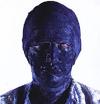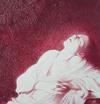– April 18, 2010
An Appreciation of Little Susie by Michael Jackson
Central to both Little Susie and Childhood are the artworks which are featured in the accompanying booklet to the HIStory album; Gottfried Helnwein's 1972 photograph titled "Lichtkind" (Child of Light) which is titled Little Susie and an undated and untitled drawing by Jackson, which includes the handwritten lyrics of Childhood (Michael Jackson. HIStory booklet. Sony BMG pg. 37 and 34).
Helnwein's photograph recreates a crime scene, in which an unidentified child's body lays on a decaying wooden floor, a lone penny positioned beside her.





Little Susie is featured on HIStory: Past, Present and Future: Book 1, however unlike the majority of the songs on HIStory (many of which were written in response to the events of 1993), Jackson penned Little Susie possibly many years earlier (Halstead, Craig and Cadman, Chris. Michael Jackson: The Solo Years. Authors OnLine Ltd. 2003. pg. 106).
Critical Reception of Little Susie:
- Little Susie alongside Childhood were described in Billboard Magazine as "maudlin ... so treacly and overwrought ... they drown under the weight of their own thick, sappy pretentiousness" (Melinda Newman. 'Michael Jackson's HIStory Lesson Comes Packed with Extracurricular Activities.' Billboard Magazine. Jul 1 1995. pg. 18).
- Little Susie, Childhood and Jackson's cover of Charlie Chaplin's Smile were described by The New York Times as "the creepiest new songs" (John Pareles. "Michael Jackson is Angry, Understand?" New York Times. Jun 18 1995).
- Rolling Stone Magazine declared both Little Susie and Childhood as "uncut Hollywood fluff" (James Hunter. "HIStory: Past, Present and Future, Book 1" Rolling Stone Magazine. Aug. 10 1995).
Central to both Little Susie and Childhood are the artworks which are featured in the accompanying booklet to the HIStory album; Gottfried Helnwein's 1972 photograph titled "Lichtkind" (Child of Light) which is titled Little Susie and an undated and untitled drawing by Jackson, which includes the handwritten lyrics of Childhood (Michael Jackson. HIStory booklet. Sony BMG pg. 37 and 34).
Helnwein's photograph recreates a crime scene, in which an unidentified child's body lays on a decaying wooden floor, a lone penny positioned beside her. The unconscious child's head and eyes are heavily bandaged, her dress, seems new and unworn, and recently placed on her tiny frame, while light, seemingly from above, accentuates her wrists and closed eyes.Thematically similar, Jackson's drawing is of a saddened child, obediently seated in the corner of a forgotten room, whose small body leans towards the wall for protection. The depicted child tightly grasps onto a microphone, which is attached to a ceaseless electric cord that weaves itself outside the room, to the outside world, a place the child is hopelessly trying to resist.
Thematic Concerns of Little Susie and Childhood
Both Little Susie and Childhood offer narratives in which the child protagonists are left to fend for themselves, as they are left disappointed and disillusioned, alone and isolated. Little Susie paints a grim image of a young girl named Susie, who was abandoned by her father, and left orphaned when her mother passed away. Susie drifts from family to family, abused and neglected, her pain and suffering ignored by the adults who were meant to protect her, and only come to Susie's aid in her death. Susie's only comfort is the tune she sings to herself, which plays repeatedly on her musical box. The opening verse of Little Susie refers to a murder, however it can also be interpreted the character of the narrative, committed suicide, her only escape from her tortured existence.


